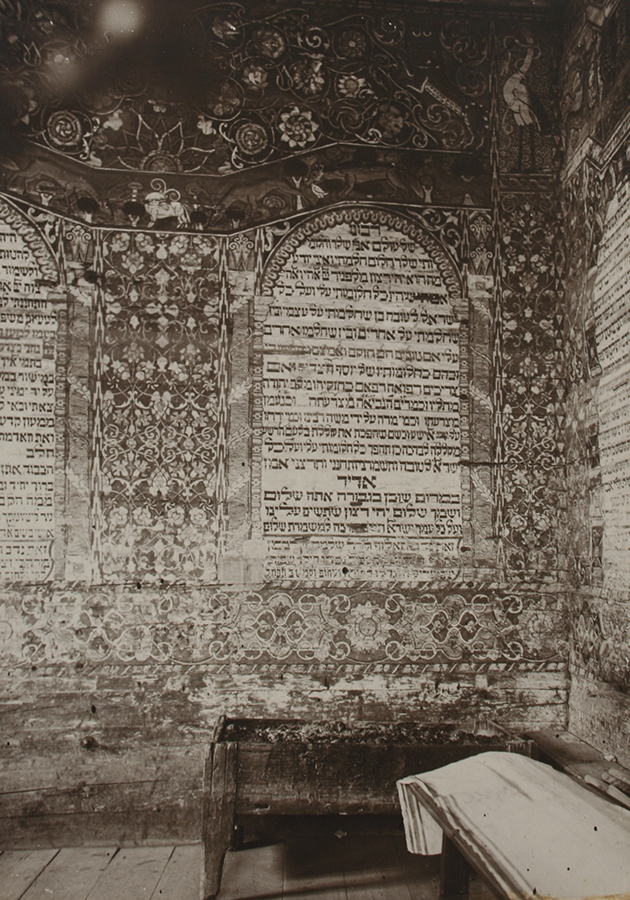Replicating the Gwozdziec Synagogue Walls /
Isidor Kaufman Painting
After 10 years of research and hands on workshop, Handshouse has completed the Gwozdziec ceiling painting and it is installed in the Museum of the History of Polish Jews for the world to see the incredible beauty of the Gwozdziec synagogue for generations to come.
Now…
Handshouse is beginning to replicate the magnificent wall paintings of the Gwozdziec Synagogue at ½ scale. This will be added to our ½ scale ceiling pantings that were completed in 2009 in preparation for the Gwozdziec ceiling painted for the Musuem of the History of Polish Jews.
The interior paintings of Gwozdziec that covered all the walls and ceiling show two artistic periods. The walls were done earlier - between 1700 and 1720 while the ceiling vaulting was completed later in 1728. Tom Hubka, author of Resplendent Synagogue Architecture and Worship in a Eighteenth Century Polish Community, describes the walls:
“The painting on these walls were a series of panels containing the text of Hebrew prayer set in elaborate architectural frames and surrounded by arches and columns similar to those found on the title pages of manuscripts and early printed books. As they were arranged around the prayer hall, the vertically framed prayer panels appeared linked together as one continuous band as if the pages of a gigantic book lined the synagogue walls.“
We are using the same traditional distemper paints we used for the ceiling and are referencing the Alois Breier photographs and painting study of one section of the wall, the famous painting Portal of the Rabbi by Isidor Kaufman from 1897. We also are studying the hand drawings and written descriptions of the synagogue by Karol Maszkowsk in 1899. He uses the image of a densely colored oriental rug to describe the overall composition of the Gwozdziec interior.
“ All the surfaces are covered with drawings and ornaments of various colors; the background is usually dark but always colored. No detail is glaring except for the white tables with inscriptions. All the paintings are subordinate, one to another; they flow together like areas of various colors and many shapes with the effect of one entity. The entire interior gives the impression of a carpet. There are sometimes very bright colors, even glaring, but they are well composed and they adept themselves to the general tone, being deep and quite dark” —Karol Maszkowski, 1899
We are beginning with the West Wall, depicted in the Isidor Kaufman painting. Our team of students and painting leaders have laid out all the motifs and details and are beginning the process of test panel for the many details and motifs. As the colors and composition come together, we are very excited to see this also come to life for the world to see.
Gwozdziec Doorway in west wall.
The World Premiere of Raise the Roof at the Atlanta Jewish Film Festival was an enormous success. Check here for upcoming screenings or here to arrange a screening.





















